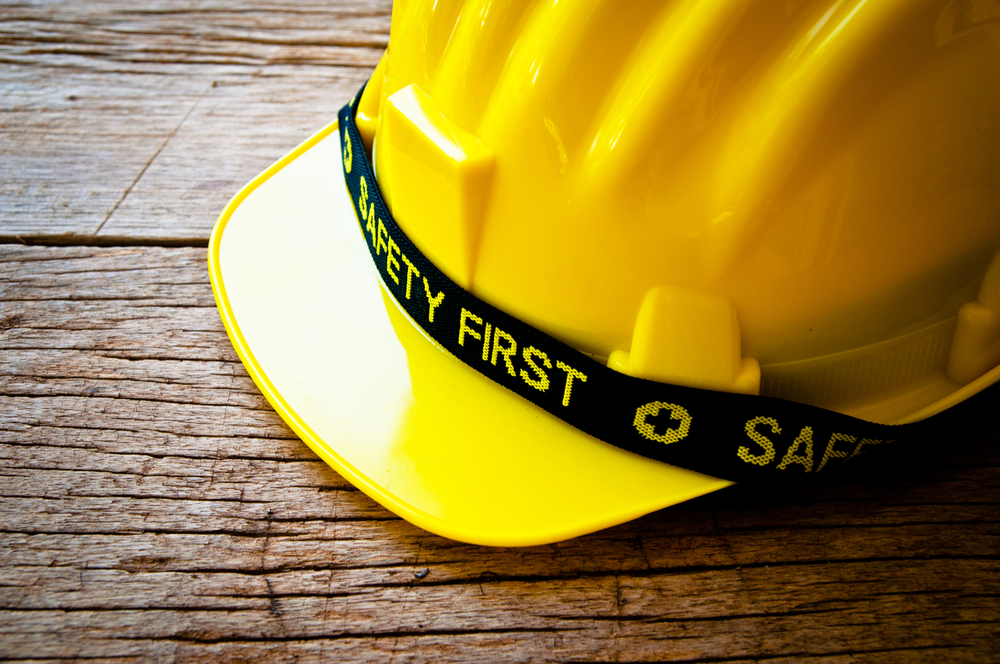News Post
May 2016 Newsletter
Mobile Elevated Work Platform Safety
Article by SMSE consultant Andy Langham
There are a number of industrial accidents every year involving mobile elevated work platforms (MEWP).
These accidents often result in significant injuries and on too many occasions fatalities. The majority of injuries result from falling from height or striking of objects at height. However, a number of injuries are also caused by the MEWP striking or running over pedestrians.
There have been a number of recent high profile prosecutions, resulting in fines of up to £20k for breaches of statutory duty regarding the management of MWEPs on site.
Please conduct an urgent review of your mobile elevated work platform (MEWP) usage and satisfy yourself that any site specific risk assessment/method statement or similar suitably covers the safe use of the MEWP. In particular please satisfy yourself that the following points are covered:
- A full familiarisation of the MEWP is conducted prior to use;
- A documented MEWP pre-use check is completed (see attached)
- A site specific risk assessment must be completed and shared with all associated operative
- A documented rescue plan must be in place;
- The operative and any person associated with the task fully walk the MEWP travel route before any MEWP usage – this is to identify any potential hazards that will need to be controlled before the MEWP is used;
- Any person being used on the ground to guide the operative must ensure that they are placed at a safe distance away from the MEWP and never within the direct travel route of the MEWP – There is no stated minimum clearance distance, the distance should be as safe a distance as possible;
- Any person associated with the task must be wearing safety footwear and high visibility clothing as a minimum;
- Travelling MEWPs must travel at the slowest possible pace (tortoise pace);
- The working area around the MEWP must be cordoned off and signed appropriately; and
- If the MEWP operator loses sight of any person acting as the MEWP guide they must stop the MEWP and regain sight before recommencing the MEWP operation.
For those clients who do not use MEWPS but do use contractors on site to carry out work using MEWPS please ensure that you thoroughly interrogate their submitted safety documentation prior to their arrival at your premises to satisfy yourself that they will complete the work safely and in line with the points as noted above.
HSE Decisions
Firm fined after forklift truck operator killed
A large steel fabrication company based in North Yorkshire, has been fined after a forklift truck (FLT)operator was killed when the truck he was operating overturned. However, the offence to which the company pleaded guilty was not a significant cause of the fatal accident.
Teesside Crown Court heard how 27-year-old Kelvin McGibbon was reversing the forklift truck when it struck some steps causing it to overturn. Mr McGibbon was not wearing a seatbelt and suffered crush injuries which proved fatal.
An investigation by the Health and Safety Executive (HSE) into the incident which occurred on 13 March 2013 found that Severfield (UK) Limited failed to manage forklift truck driving operations. They did not enforce the wearing of seat-belts or control the speed at which some FLT operators drove their trucks.
Severfield (UK) Limited, of Severs House, Dalton Airfield Industrial Estate, Dalton, Thirsk, North Yorkshire, pleaded guilty to a non-causative breach of Regulation 5(1) of the Management of Health and Safety at Work Regulations 1999, and was fined £135,000 and ordered to pay costs of £46,020.
The HSE inspector said after the hearing: “A company has a legal duty for the health and safety of people working on its site, whether they are employees or not. They are required to assess risks, eliminate them where possible and enforce proper control measures, such as seat belt wear, by checking that safe driving practices are being followed to deal with the risks that remain.
“Sadly, in this case, the prosecution shows that the company’s management of FLT driving operations and risk control measures failed with tragic consequences for Mr McGibbon and his family.”
Talk About Cases:
Thomas the Baker fined £6,500 after worker’s hand is mangled in pastry machine
An award-winning bakery which has outlets across the region has been fined for safety breaches after a worker suffered severe injuries while operating a pastry-making machine.
Northallerton Magistrates Court heard Simon Ventress had his hand pulled into the Janssen lid forming pastry machine at Thomas the Baker’s production centre in Sawmill Lane, Helmsley, in February last year.
Mr Ventress, who had worked for the firm for more than a decade at the time of the incident, had skin torn from his hand and sustained several fractured fingers.
The Health and Safety executive said medics had described Mr Ventress’s injuries as a “partial de-gloving”, for which plastic surgeons have traditionally used skin grafting to reconstruct hand surfaces.
The court was told the family-run firm, which opened its first shop 35 years ago and has won a series of awards, including for its sausage rolls, had modified the machine, removing parts of the guarding system to improve its operation.
When the modification was removed after being found to be ineffective the guards were not replaced.
The firm admitted failing to ensure that effective measures were taken to prevent access to the dangerous parts of the machine, or to stop the movement of dangerous parts of the machine before any part of a person, including Simon Ventress, entered the danger zone.
It also pleaded guilty to failing to ensure the machine was fitted with a control to prevent it being started except by a deliberate action.
The Helmsley-based company has 21 shops in York and North Yorkshire.
Magistrates lowered the fine to £6,500 after hearing the firm had entered a guilty plea and ordered it to pay £691 costs and a £120 victim surcharge.
After the hearing, the HSE inspector said: “Modifying machines should always involve a reassessment of the safety of that machine. Guard checking routines should be periodically audited to ensure they remain effective.”
Simon Thomas, the firm’s general manager, said: “Both the family and directors of Thomas the Baker deeply regret the unfortunate accident that led to Simon injuring his hand.
“Simon has since made an excellent recovery. During 35 years of trading, this is the first time that a member of staff has sustained a serious injury of this nature at work.
“Full co-operation was given to the Health and Safety Executive during their investigations and action has been taken to safeguard against similar incidents in the future.”
£200k fine following toxic chemical release
A chemical company has been sentenced in Leeds Crown Court for safety breaches when a very toxic chemical was ejected under pressure.
A company maintenance technician unintentionally opened a valve on top of an isotanker at Syngenta Ltd’s Huddersfield plant resulting in the release of between 3.5 and 3.8 tonnes of paraquat dichloride solution. The Health and Safety Executive (HSE) prosecuted the firm over the incident.
Syngenta admitted two charges contravening regulations, failing to ensure that work equipment was maintained in an efficient state and failing to take all measures necessary to prevent a major accident, the firm’s first conviction.
Syngenta Ltd of Leeds Road Huddersfield pleaded guilty to breaching Regulation 4 of the Control Of Major Accident Hazards Regulations 1999 and Regulation 5(1) of the Provision and Use of Work Equipment Regulations 1998 and was fined £200,000 with £13,041 costs by Leeds Crown Court.
Judge David Hatton QC said he accepted Syngenta was a responsible company with a good safety record.
He said: “What occurred was a combination of a defect in the coupling for which there was no regime of routine inspection and maintenance and also pressure in the tanker caused by a failure to adequately vent the tanker so pressure arose because the isolation valve below the cow horn adaptor was at the material time closed.”
But the judge said the event could very easily have “had a tragic end, even for example by Mr Morris having ingested a small quantity had he had his mouth open at the time.”
After the hearing, the HSE inspector commented: “This incident could have been prevented if Syngenta had properly assessed the real risk of the value being opened while the tank was under pressure”.
Dominic Adamson representing the company expressed “sincere regret” for the incident that gave rise to this prosecution. He added: “Syngenta takes responsibility for health and safety very seriously and the loss of its unblemished track record is a heavy blow.”
He said they accepted there was an omission in their maintenance regime regarding the couplings which had now been rectified.
Care home found guilty following wardrobe death
A care home firm has been convicted of a health and safety charge following the death of 80-year-old Thomasina Bennett, from Belper, who died when a wardrobe fell on top of her at Milford House Care Home in April 2012.
Mrs Bennett, who suffered from Alzheimer’s disease, was temporarily staying at the care home while her daughter was on holiday.
Mrs Bennett was discovered by a carer early one morning and was later confirmed dead by a nurse.
Milford House Partnership had denied two health and safety at work charges, but were convicted of one relating to personal activity monitor alarms.
Derby Crown Court heard the monitors were “systematically unsafe”.
Gerald Hudson, 72, from Ambergate, trading as Milford House Partnership, was found not guilty of the other charge, which related to the fastening of the wardrobe onto the wall.
Another hearing is taking place on Thursday which will seek to determine a sentencing date.
Following the verdict yesterday, Mrs Bennett’s daughter, Margaret Calladine, said: “I would like to thank Amber Valley Borough Council for all the support we have had over the last four years. And I hope lessons have been learned – where no other family will have to go through the tragedy and distress that we have had to go through.”
She said the last four years had been an “emotional roller-coaster” for them.
Mrs Calladine added that she hoped legislation around how care homes care for people would be “tightened up”.
Following the verdict, Amber Valley Borough Council said: “Our thoughts and sympathies at this moment are with Mrs Bennett’s family. On top of their terrible loss they have had to endure a lengthy wait for the case to come to court and then sit through some very painful evidence over the past two weeks.
“This trial represented the culmination of a lengthy, in-depth investigation by Amber Valley Borough Council officers. During this investigation we were satisfied we had discovered evidence of a systematic failure in health and safety processes, contributing to the incident involving Mrs Bennett at Milford House in 2012.
“We hope the Jury’s decision today will have far-reaching consequences for improved health and safety standards in care facilities, not just in the Amber Valley area, but across the whole UK.”
A statement from Milford Care said: “The team at Milford House were deeply saddened by the accident in April 2012. We are all devastated by the loss of Mrs Bennett and our thoughts continue to be with her family.
“Our management team acknowledges the outcome of the ruling and prior to this we had already taken steps to safeguard against a tragic accident like this happening again. We respect the findings of the jury in relation to the use of the Portable Activity Monitors. During the trial our legal team told the court that the monitors were an additional aid, which went above and beyond our legal requirements and did not replace the two hourly checks that we carry out throughout the night on all our residents. They were bought in good faith from a specialist company who had provided them to other healthcare organisations including the NHS, and were used in accordance with manufacturer’s instructions.
“The wellbeing and safety of our residents has and always will be our number one priority and we will continue to work diligently to promote their wellbeing at all times.”
£153k fine after worker falls through roof light
A solar panel firm has been fined £153,000 after a worker was seriously injured in a fall through a fragile roof light at a private home in Kent. An HSE inspector said that better equipment, training and supervision should have been provided.
The 32-year-old worker, from Ashford, fractured his shin and a vertebra in the incident at Elvington Lane in Hawkinge on 30 April 2013.
It was heard how the roof light was on an outbuilding housing a swimming pool. Although the water partially cushioned his fall, he made a heavy impact with the side and flooring around the pool, and was unable to return to work until January this year and only then on a part-time basis.
Glasgow-based P V Solar UK Limited was sentenced at Canterbury Crown Court after an investigation by the Health and Safety Executive (HSE) found that more could and should have been done to prevent the fall.
The court had heard in a hearing in January 2016 that the injured worker was part of a three man team working on the pool building to replace faulty solar panels that were initially installed by the same company in April 2011. At this time the company pleaded guilty to three health and safety offences.
The fragile roof also contained eight roof lights and he fell through one of these as he walked on the roof while carrying a panel.
HSE established that a scaffold tower, ladder and safety harness had been provided for the panel replacement work. However, none of the installation team had received any formal training or instruction on how to use them. This effectively rendered the equipment useless, Other measures could also have been taken, such as providing full scaffolding or hard covers for the rooflights.
HSE established that although the initial installation work in 2011 was completed without incident, the safety equipment provided on that occasion was also lacking, which again placed workers at risk.
The court had also been told that P V Solar was served with a Prohibition Notice by HSE to stop unsafe work on a fragile roof in Bristol in May 2011. The company was therefore well aware of the need to ensure that adequate provisions were in place to prevent or mitigate falls during work at height.
P V Solar UK Limited, of Cambuslang Road, Glasgow, was fined a total of £153,000 and ordered to pay a further £29,480 in costs after pleading guilty to three separate breaches of the Work at Height Regulations 2005.
After the hearing, the HSE Inspector said: “The injured worker suffered serious injury in the fall and could have been killed. He and his colleagues were effectively left to their own devices with equipment that was not wholly suited for the task at hand. In short, better equipment, training and supervision should have been provided.
“Working on or near a fragile roof or materials is not a task to be undertaken without proper planning, and without having the appropriate safety measures in place at all times. There is considerable free guidance available from the HSE regarding the precautions needed when working at height, including on or near fragile roof coverings.”
No safe system for the prevention of falls, court hears
A family partnership in Pembrokeshire has been fined after a worker fell through a skylight forming part of the roof of a cattle shed to the concrete floor below in June 2014.
Haverfordwest Magistrates’ Court heard how the Rees family partnership of Gwynne (father), Margaret (mother) and Richard (son) had contracted the company Evans Agri Contracting (EAC) to carry out a one day silage harvest.
An employee of EAC became involved in sheeting the silage by lowering plastic sheeting from the roof of the cattle shed. The sheeting from the cattle shed roof was not part of the silage harvest contract but a job the Rees partnership was carrying out independently. The employee of EAC was assisting members of the Rees family partnership and was under their direction.
It was while doing this that the twenty-four-year-old worker tripped and fell through a skylight at least four metres to the concrete floor. He suffered a broken right arm and elbow and heavy bruising.
An investigation by the Health and Safety Executive (HSE) into the incident found that the work on the roof had not been planned and there was no safe system for the prevention of falls off or through the fragile roof.
Rees family partnership, of Dinas, Fishguard, Pembrokeshire, pleaded guilty to breaching Regulations 6(3) of the Work at Height Regulations 2005, and was fined £5,000 and ordered to pay costs of £1121.55.
Four different duty holders have been fined after a worker was injured while replacing a window at Leeds Prison
Leeds Magistrates’ Court heard how a window on the third floor at Leeds Prison was in need of replacing. Four parties were involved with the installation and all were charged with safety breaches for their part in the incident.
Stuart Tombs was the site manager via his own company SJT Site Management Limited (SJT). SJT was contracted by Longcross Construction Limited (LCL), the principal contractor for the window replacement work.
Fewell Engineering Limited (FEL) were subcontracted by LCL, and it was an employee of FEL who was pushing a trolley with the new window on it when the incident occurred.
The court heard an employee of SJT was operating a mobile elating work platform (MEWP) and driving it to the location of the work when one of the wheels struck the FEL employee and partially ran over his feet.
The injured man suffered multiple fractures in his right foot, a fracture of his left ankle and significant soft tissue damage to both feet.
An investigation by the Health and Safety Executive (HSE) into the incident which occurred on 8 September 2014 found that Longcross Construction Limited, Fewell Engineering and SJT Site Management Limited, all failed to prepare suitable and sufficient Risk assessments and method statements for the operation.
It was also discovered Stuart John Tombs forged or fabricated site health and safety documents in an attempt to deflect responsibility.
The sentences were as follows:
- Fewell Engineering Limited, of Fairfield Works, High Wycombe Buckinghamshire, pleaded guilty to breaching Section 2(1) of the Health and Safety at Work etc. Act 1974, and was fined £20,000 and ordered to pay costs of £702.
- Longcross Construction Limited, of Hill House, Little New Street, London, pleaded guilty to breaching Section 3(1) of the Health and Safety at Work etc. Act 1974, and was fined £20,000 and ordered to pay costs of £303
- SJT Site Management Limited, of Watling Street, Bridgtown, Cannock, Staffordshire, pleaded guilty to breaching Section 3(1) of the Health and Safety at Work etc. Act 1974, and was fined £600 and ordered to pay costs of £199.
- Stuart John Tombs, of Bondway, Hednesford, Cannock, Staffordshire, pleaded guilty to breaching Section 33(1)(1) of the Health and Safety at Work etc. Act 1974, and was fined £100 and ordered to pay costs of £149.
Contractor fined after worker injured in cable strike
A Helensburgh-based contracting company has been fined after a worker hit an underground cable and suffered burns to his hands and face whilst working on a primary school refurbishment project.
Hamilton Sheriff Court heard that on the 1 September 2011 the incident took place at a construction site at Heatheryknowe Primary School in East Kilbride. A worker for Stewart and Shields Limited was digging holes to erect a fence when he struck a 430v underground electric services cable causing minor flash burns to his hands and face.
The Health and Safety Executive investigated the incident and found that site reports containing information about ‘buried services’ were made available to the company but they had failed to provide this information to workers or clearly mark where the power lines were situated underground. They should also have also ensured that workers using digging devices were adequately trained.
Stewart and Shields Limited pleaded guilty to breaching Regulation 34(3) of the Construction (Design and Management) Regulations 2007 and Section 33(1)(c) of the Health and Safety at Work etc. Act 1974 and were fined £7,500.
The HSE Inspector said: “There is an obligation on contractors to ensure that workers are informed of the dangers from buried underground services, and the need to ensure those services are located, checked and clearly mark
Did You Know?
- More than 24,000 members of the public were injured as the result of a work activity.
- Falls from a height are the most common cause of death to employees.
- Workers in small manufacturing firms are more than twice as likely to be killed at work than workers in larger firms in the same sector.
- Every year around 3000 people die as a result of past exposure to asbestos
Source – HSE Information Centre, Broad Lane, Sheffield S3 7HQ
Latest News
Health and Safety in Schools Checklist
Health and safety should be a top priority in any workplace, but especially in schools. Not only are you responsible for your staff’s safety, but you need to maintain the welfare of your pupils too. To do so, you must uphold your legal complian..
It can be difficult to decide your future path - a lot can ride on it, after all - but a career in health and safety could be the right choice for you. There are several types of careers in the health and safety industry that might be a good fit..
What is ISO 45001?
If you’re wondering what ISO 45001 is, then this is the guide for you. Replacing the old OHSAS 18001 standard, ISO 45001 is the new international standard for occupational health and safety management. In this guide, we'l..
Who Enforces Health and Safety?
The enforcement of health and safety is crucial to maintain healthy workplaces. The term health and safety itself covers the safety legislation and safety law that comes under the Health and Safety at Work Act 1974. In general, this means t..
Health and safety training is a requirement in the workplace, no matter which sector you work in. Our experts at SMS Europe have been providing an extensive range of specialist health and safety services for almost 20 years. To help make work en..
Health and safety in the workplace is all about controlling risks in a way that protects both your employees and your company. Strong leadership, including your employees, managers, suppliers, contractors, and consumers, is a characteristic of great ..
Health and safety in the workplace is immeasurably important. But, without the Health and Safety at Work Act of 1974, we might have never prized safety so highly. This piece of workplace legislation is highly significant and indeed has transform..
Fire Safety and Fire Risk Assessment at Leased Offices and Buildings Fire safety at leased single and multi- tenanted offices can be approached in a number of ways. Generally speaking, there are three types of premises, (single occupancy lea..
Safety Gloves
Please have a read at SMSE Managing Director Philip Marsden's article on Safety Gloves which is published in the February 2022 edition of Health and Safety International Magazine. https://www.hsimagazine.com/article/fits-like-a-glove/ We wo..
Current Health and Safety Industry Trends
New Guidance Released for Managing Home Workers As an employer, you have the same health and safety responsibilities for those who work from home as you do for all other employees who may work from the workplace. In most cases, the dange..
Who Is Responsible for the Health and Safety on a Building Site? Legally, the responsibility of health and safety within the business lies with the employer. It is up to them to make sure the environment meets the necessary health and safety requi..
No one wants to be injured whilst at work, and no one wants their staff to be injured, especially whilst on the job. That doesn’t mean that accidents don’t happen. In fact, each year an average of 22 manufacturing workers die in workplace..












